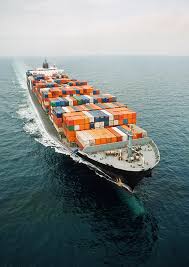MARKET OVERVIEW:
Global Ship Leasing market is estimated to reach $61,415.6 Million by 2031; growing at a CAGR of 3.7% from 2023 to 2030.
The Global Ship Leasing market is essential for international trade, leasing ships to transport goods across oceans. It has grown significantly, serving a diverse client base from big corporations to small businesses involved in import and export. The market includes various vessel types like container ships, bulk carriers, and oil tankers tailored for specific cargo needs. Demand for these vessels fluctuates with economic conditions, geopolitical factors, and supply chain changes.
Ship leasing provides a flexible and cost-effective solution for companies needing sea transportation without the high cost of vessel ownership. It allows access to a variety of vessels suitable for specific cargo requirements, crucial in a fluctuating global market. The market is influenced by global economic situations, trade agreements, environmental regulations, and geopolitical tensions that can impact vessel supply and demand.
Recent developments focus on environmental sustainability, with companies adopting eco-friendly technologies to reduce emissions and align with climate change initiatives. The industry plays a vital role in modern global trade, adapting to changing trends and concerns. As international trade evolves, the ship leasing industry will remain vital in facilitating the movement of goods worldwide, highlighting its importance in the global trade landscape.

GROWTH FACTORS
The Ship Leasing market is growing due to its cost-efficiency and flexibility. Companies in the maritime sector are opting for leasing over ownership due to the lack of upfront investment, freeing up capital for other uses and providing financial flexibility. Ship leasing allows companies to adjust their fleets according to market demands, enhancing operational efficiency.
Global trade expansion is driving the need for maritime transportation, increasing demand for efficient cargo movement. Ship leasing allows businesses to quickly adjust fleet sizes to meet cargo demands, ensuring smooth operations and customer satisfaction.
Challenges in the Ship Leasing market include the dynamic nature of global trade, which requires flexibility that traditional ownership struggles to provide. Regulatory compliance is also a significant constraint, with evolving environmental standards impacting operational procedures and leasing terms.
Despite challenges, the Ship Leasing market offers promising opportunities. Sustainable Shipping Initiatives are gaining traction, with increased demand for eco-friendly vessels. Investing in environmentally conscious technologies can lead to a competitive edge and improved brand reputation, aligning with sustainability objectives and appealing to environmentally conscious customers. Embracing sustainability can lead to a stronger position in a market that values responsible consumption.

MARKET SEGMENTATION
By Vessel Type
The Ship Leasing Market is diverse, with different vessel types playing key roles. In 2022, there were varying values in different segments. Container Ships were valued at 7581. 7 USD Million, highlighting their importance in global trade. Bulk Carriers, valued at 10315. 2 USD Million, specialize in transporting bulk cargo like coal and grain. Tankers, valued at 15474. 8 USD Million, are crucial for transporting liquid energy resources like crude oil and LNG. Specialized Vessels, including Ro-Ro and Reefer vessels, were valued at 9075. 5 USD Million, catering to specific cargo needs.
Each segment contributes significantly to global trade, resource transportation, and specialized cargo needs. The varying values in each segment show the importance of these vessels in the maritime transportation industry.
By Lease Duration
The Ship Leasing Market offers various lease durations to meet the needs of businesses in the maritime industry. This includes Short-Term Lease (less than 1 year), Medium-Term Lease (1-5 years), and Long-Term Lease (more than 5 years). In 2022, the Short-Term Lease segment was valued at 13,688. 6 USD Million, catering to immediate needs with flexibility.
The Medium-Term Lease segment, valued at 15,377. 2 USD Million, provides a balance between flexibility and stability for businesses with longer-term requirements.
The Long-Term Lease segment, valued at 13,381. 3 USD Million, is suited for businesses needing vessels consistently over an extended period, offering cost-efficiency and assurance of vessel availability. These segments showcase the industry's customer-centric approach by providing tailored solutions for businesses with varying duration needs. The maritime industry's adaptability ensures that businesses can access vessels according to their specific demands.
By Lease Type
The Ship Leasing Market is complex and diverse, with four primary segments: Bareboat Charter, Time Charter, Financial Lease, and Others. Bareboat Charter allows the lessee full control and possession of the ship, providing flexibility and autonomy. Time Charter gives the lessee possession of the ship for a specific period, while the ship's owner retains ownership and responsibilities. Financial Lease gives lessees benefits and responsibilities of ownership, with the option to purchase the ship at the end of the lease. The Others segment includes alternative leasing arrangements not fitting in the primary categories.
These segments cater to different needs within the market, offering various options for acquiring and using vessels. Companies can choose the lease type that fits their operational and financial goals, contributing to the market's diversity and flexibility. The market's overall health is influenced by the performance of these segments, reflecting the different demands and strategies of businesses involved in ship leasing. Each segment has distinct characteristics and values, shaping the landscape of the Ship Leasing Market and providing opportunities for companies to meet their specific requirements.
By End User
The Ship Leasing market is influenced by various end-user industries. In 2022, the Oil and Gas sector led with a value of 8501. 2 USD Million, relying on ship leasing for transporting products. The Manufacturing and Industrial sector followed closely at 6983. 5 USD Million, using vessels for moving materials and products. With a value of 5670. 4 USD Million, the Automotive industry also plays a significant role in ship leasing for vehicle transportation. The Agriculture and Food sector, valued at 6813. 9 USD Million, depends on shipping for food import and export. The Retail and Consumer Goods sector is valued at 10185 USD Million and relies on efficient logistics, making ship leasing essential for its operations. The Others segment, valued at 4293. 1 USD Million, includes industries with unique shipping needs.
The symbiotic relationship between ship leasing and these industries shapes the market's dynamics and is vital for the global economy. The market's growth is fueled by the diverse needs of sectors, highlighting its importance in the global economy.
REGIONAL ANALYSIS
The global Ship Leasing market is divided into North America, Europe, Asia Pacific, and the Rest of the World. North America has strong growth in ship leasing due to its strategic location and advanced infrastructure. In Europe, the market is prominent because of its extensive coastline and strong maritime tradition. Asia Pacific, especially China, is a frontrunner in ship leasing due to its booming international trade. The Rest of the World, including regions like South America and the Middle East, also participate in ship leasing activities, catering to unique demands such as offshore drilling.
Overall, each region contributes to the resilience and diversity of the global Ship Leasing market. North America, Europe, Asia Pacific, and the Rest of the World all play vital roles in the market, reflecting the importance of ship leasing worldwide.

KEY INDUSTRY PLAYERS
The global Ship Leasing market involves companies and individuals renting ships for transportation of goods, commodities, and people. Key players in this industry include A. P. Moller - Maersk Group and Mitsui O. S. K. , who lease various types of vessels like container ships and oil tankers to meet the global demand for maritime transport efficiency. A. P. Moller - Maersk Group, a Danish conglomerate with a long history, owns and leases container ships, aiding global trade. Mitsui O. S. K. , a Japanese corporation, manages a diverse fleet of vessels, supporting the smooth flow of goods across international waters.
These key players, along with others in the industry, are essential to global trade and commerce, facilitating the movement of goods on a large scale. The Ship Leasing market is integral to the global economy, supporting trade and the transportation of various products and resources across the seas. The role of key players in this industry is crucial, enabling the efficient movement of goods on a global scale and contributing to the world's economic systems.
REPORT SCOPE AND SEGMENTATION
|
Attributes |
Details |
|
Market Size By 2031 |
USD 61,415.6 Million |
|
Growth Rate |
CAGR of 3.7% |
|
Forecast period |
2024 - 2031 |
|
Report Pages |
250+ |
|
By Vessel Type |
|
|
By Lease Duration |
|
|
By Lease Type |
|
|
By End User |
|
|
By Region |
|
|
Key Market Players |
|



_page-000151.jpg)
_page-000150.jpg)
_page-00015.jpg)











 APAC:+91 7666513636
APAC:+91 7666513636





